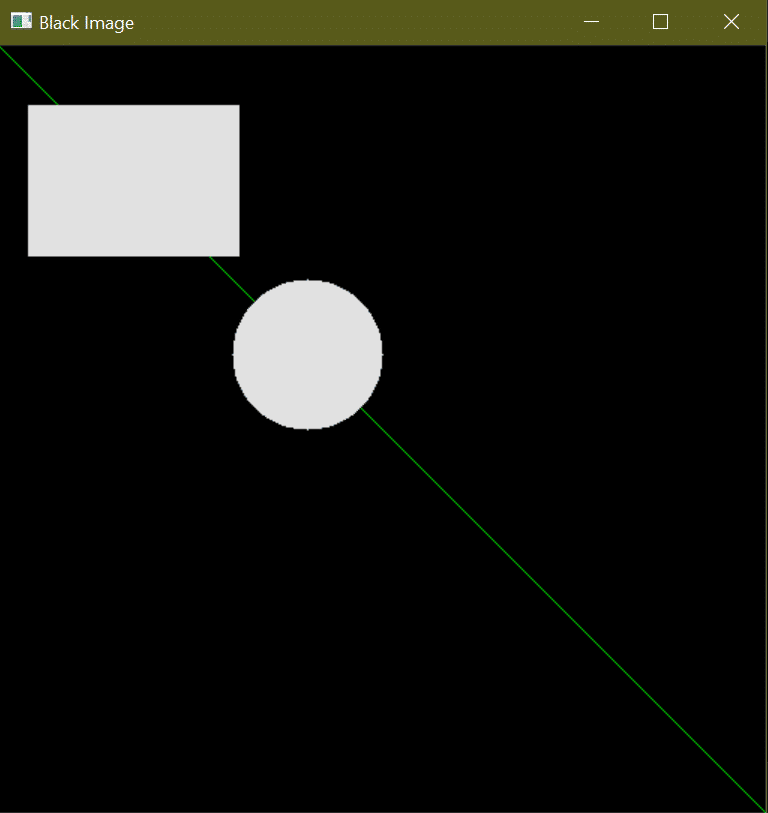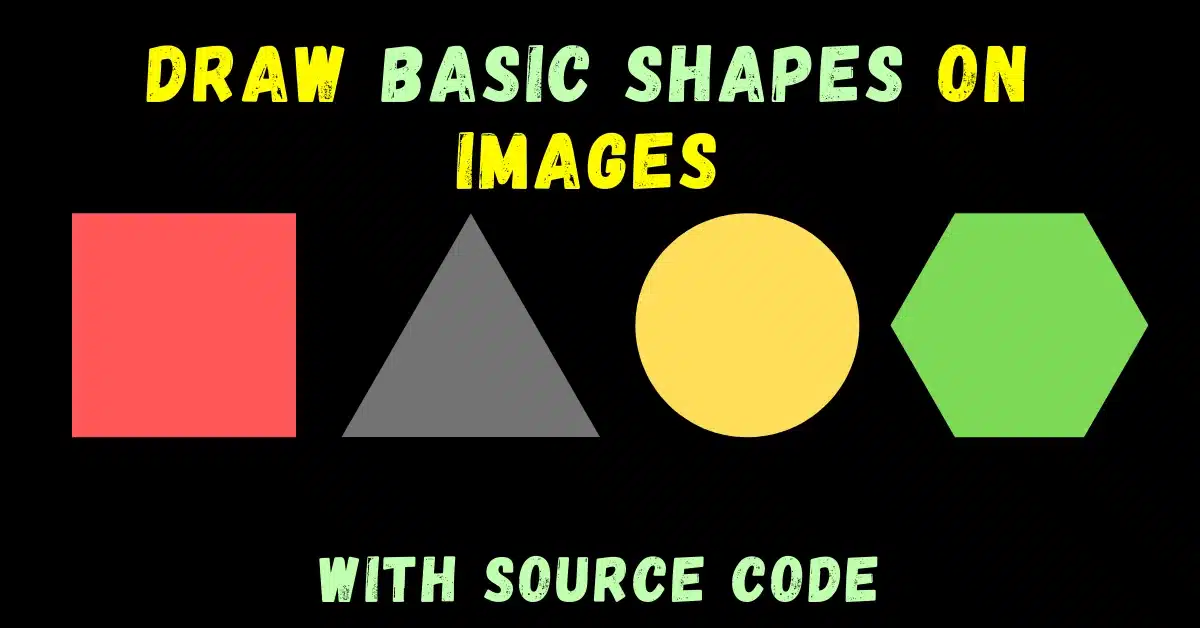While playing with images in OpenCV we can do various fun stuff using its inbuilt functions. One of them is drawing basic shapes like circles, rectangles, ellipses, and lines on images.
In today’s very short blog we will see that how we can draw these basic shapes on a black image. This is going to be a very interesting blog, so without any further due, Let’s do it…
Step 1 – Import the required packages.
import cv2 import numpy as np
Step 2 – Create a Black image.
img = np.zeros((512,512,3), np.uint8)
- Yes, you read that right. We can create an image also in OpenCV on which we will draw our shapes.
- What this line will do is, it will create a 3-D array of all zeros with height and width both set to 512 pixels. The three dimensions here depict RGB channels.
- When all these are 0 it will act as a black image because we know that (0,0,0) is black and (255,255,255) is white. Every pixel of this image will be (0,0,0).
Step 3 – Visualize our black image.
cv2.imshow('Black Image', img)
cv2.waitKey(0)

Let’s draw our shapes…
Line
Syntax – cv2.line(image, start_point, end_point, color, thickness)
Parameters:
| image | It is the image on which line is to be drawn. |
| start_point | It is the starting coordinates of the line. The coordinates are represented as tuples of two values i.e. (X coordinate value, Y coordinate value). |
| end_point | It is the ending coordinates of line. The coordinates are represented as tuples of two values i.e. (X coordinate value, Y coordinate value). |
| color | It is the color of the line to be drawn. For BGR, we pass a tuple. eg: (255, 0, 0) for blue color. |
| thickness | : It is the thickness of the line in px. |
cv2.line(img, (0, 0), (512, 512), (0, 225, 0))

Rectangle
Syntax: cv2.rectangle(image, start_point, end_point, color, thickness)
Parameters:
| image | It is the image on which a rectangle is to be drawn. |
| start_point | It is the starting coordinates of the rectangle. The coordinates are represented as tuples of two values i.e. (X coordinate value, Y coordinate value). |
| end_point | It is the ending coordinates of the rectangle. The coordinates are represented as tuples of two values i.e. (X coordinate value, Y coordinate value). |
| color | It is the color of the borderline of the rectangle to be drawn. For BGR, we pass a tuple. eg: (255, 0, 0) for blue color. |
| thickness | It is the thickness of the rectangle borderline in px. The thickness of -1 px will fill the rectangle shape by the specified color. |
cv2.rectangle(img, (20, 40), (160, 140), (225, 225, 225), -1)

Circle
Syntax: cv2.circle(image, center_coordinates, radius, color, thickness)
Parameters:
| image | It is the image on which a circle is to be drawn. |
| center_coordinates | It is the center coordinates of circle. The coordinates are represented as tuples of two values i.e. (X coordinate value, Y coordinate value). |
| radius | It is the radius of circle. |
| color | It is the color of border line of circle to be drawn. For BGR, we pass a tuple. eg: (255, 0, 0) for blue color. |
| thickness | It is the thickness of the circle border line in px. Thickness of -1 px will fill the circle shape by the specified color. |
cv2.circle(img, (206, 206), 50, (225, 225, 225), -1)

Ellipse
Syntax: cv2.ellipse(image, center coordinates, axesLength, angle, startAngle, endAngle, color [, thickness[, lineType[, shift]]])
Parameters:
| image | It is the image on which ellipse is to be drawn. |
| center_coordinates | It is the center coordinates of ellipse. The coordinates are represented as tuples of two values i.e. (X coordinate value, Y coordinate value). |
| axesLength | It contains tuple of two variables containing major and minor axis of ellipse (major axis length, minor axis length). |
| angle | Ellipse rotation angle in degrees. |
| startAngle | Starting angle of the elliptic arc in degrees. |
| endAngle | Ending angle of the elliptic arc in degrees. |
| color | It is the color of border line of shape to be drawn. For BGR, we pass a tuple. eg: (255, 0, 0) for blue color. |
| thickness | It is the thickness of the shape border line in px. Thickness of -1 px will fill the shape by the specified color. |
| lineType | This is an optional parameter.It gives the type of the ellipse boundary. |
| shift | This is an optional parameter. It denotes the number of fractional bits in the coordinates of the center and values of axes. |
cv2.ellipse(img, (380, 380), (50, 20), 0, 0, 360, (225, 225, 225), -1)

NOTE: You can read more about drawing shapes here.
Do let me know if there’s any query regarding this topic by contacting me on email or LinkedIn.
So this is all for this blog folks, thanks for reading it and I hope you are taking something with you after reading this and till the next time ?…
Read my previous post: HOW TO RESIZE AN IMAGE IN PYTHON USING OPENCV
Check out my other machine learning projects, deep learning projects, computer vision projects, NLP projects, Flask projects at machinelearningprojects.net.
